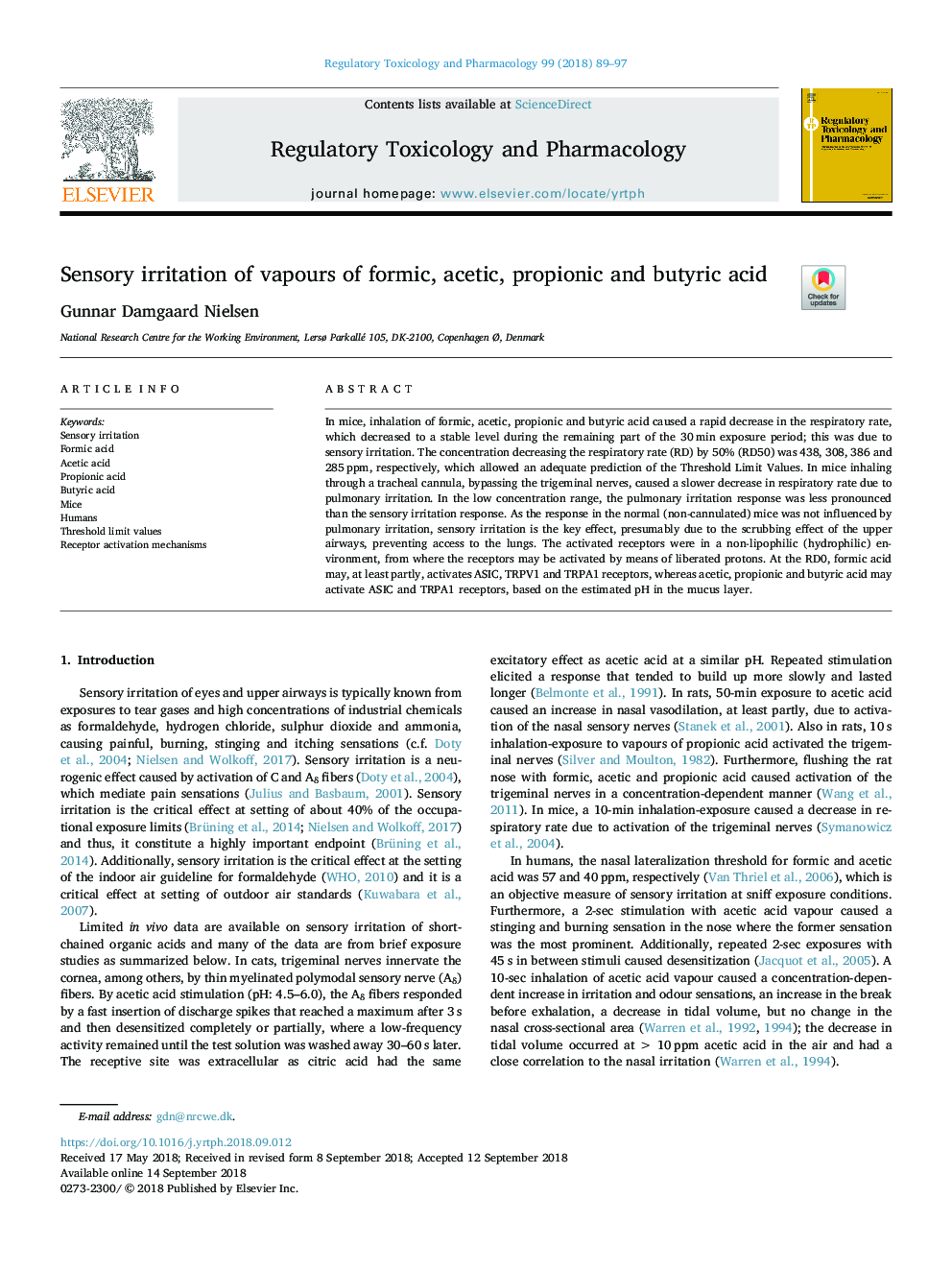| Article ID | Journal | Published Year | Pages | File Type |
|---|---|---|---|---|
| 10137718 | Regulatory Toxicology and Pharmacology | 2018 | 9 Pages |
Abstract
In mice, inhalation of formic, acetic, propionic and butyric acid caused a rapid decrease in the respiratory rate, which decreased to a stable level during the remaining part of the 30â¯min exposure period; this was due to sensory irritation. The concentration decreasing the respiratory rate (RD) by 50% (RD50) was 438, 308, 386 and 285â¯ppm, respectively, which allowed an adequate prediction of the Threshold Limit Values. In mice inhaling through a tracheal cannula, bypassing the trigeminal nerves, caused a slower decrease in respiratory rate due to pulmonary irritation. In the low concentration range, the pulmonary irritation response was less pronounced than the sensory irritation response. As the response in the normal (non-cannulated) mice was not influenced by pulmonary irritation, sensory irritation is the key effect, presumably due to the scrubbing effect of the upper airways, preventing access to the lungs. The activated receptors were in a non-lipophilic (hydrophilic) environment, from where the receptors may be activated by means of liberated protons. At the RD0, formic acid may, at least partly, activates ASIC, TRPV1 and TRPA1 receptors, whereas acetic, propionic and butyric acid may activate ASIC and TRPA1 receptors, based on the estimated pH in the mucus layer.
Keywords
Related Topics
Life Sciences
Environmental Science
Health, Toxicology and Mutagenesis
Authors
Gunnar Damgaard Nielsen,
